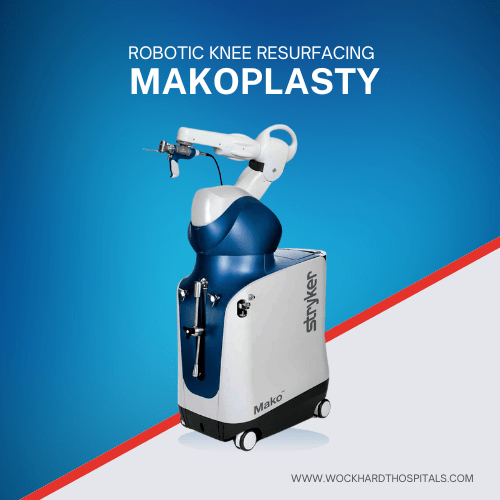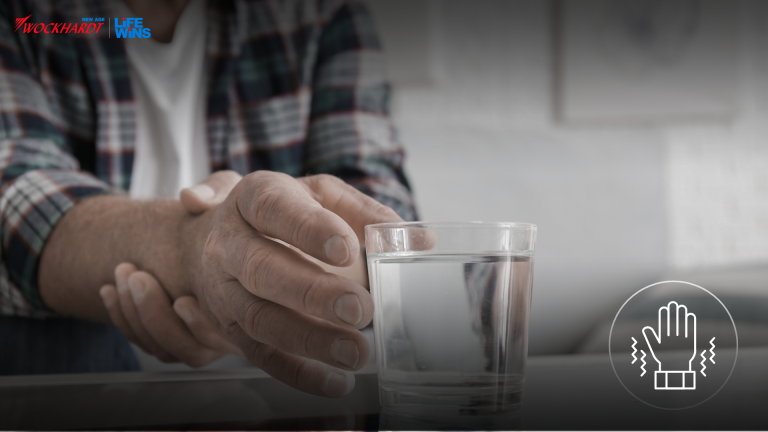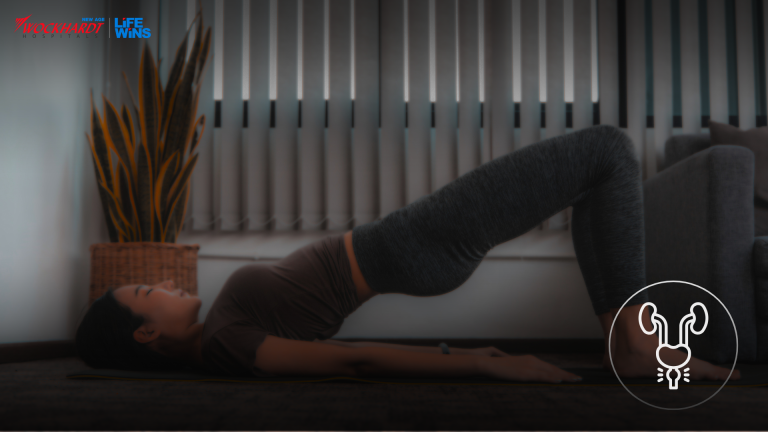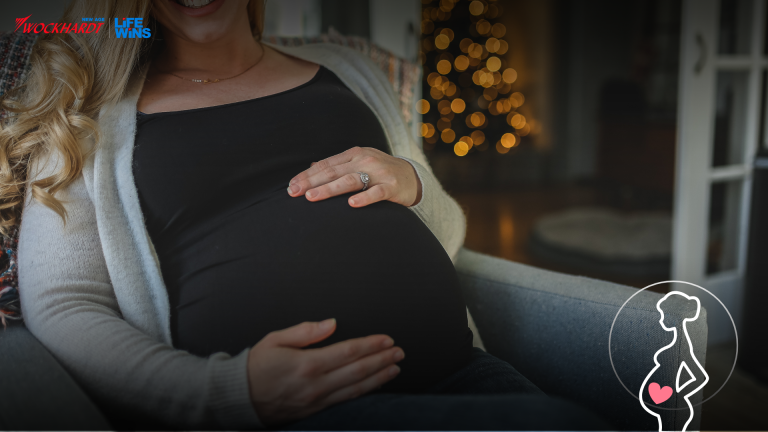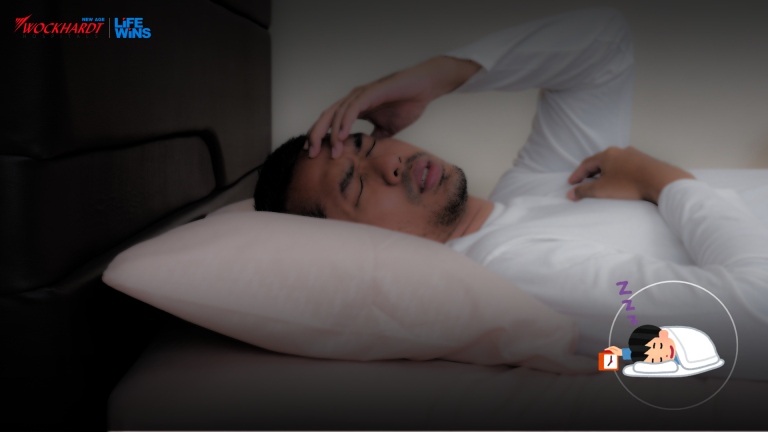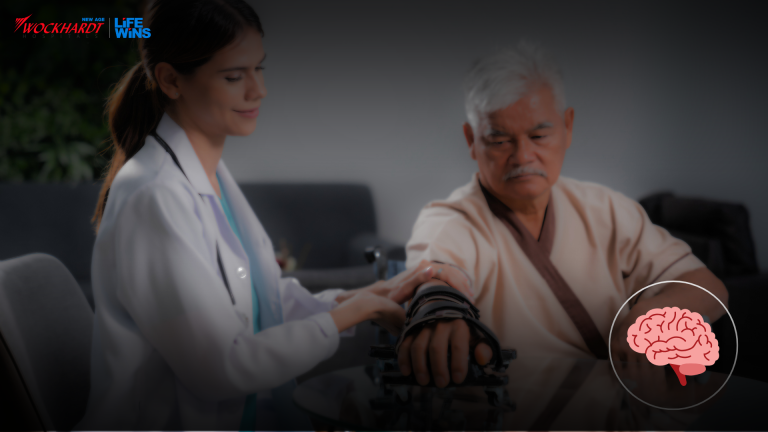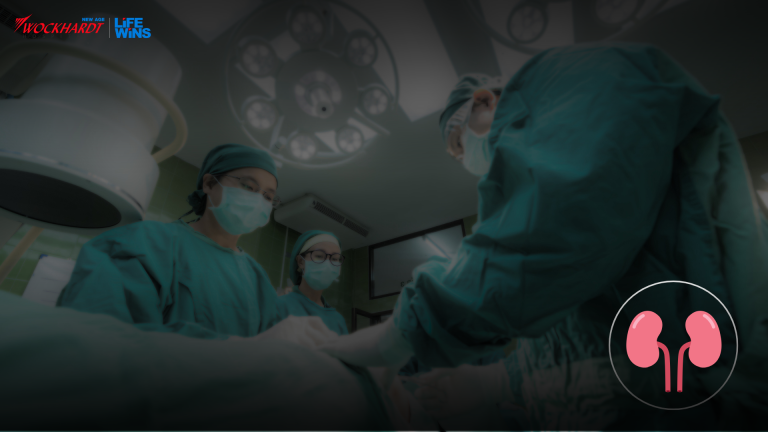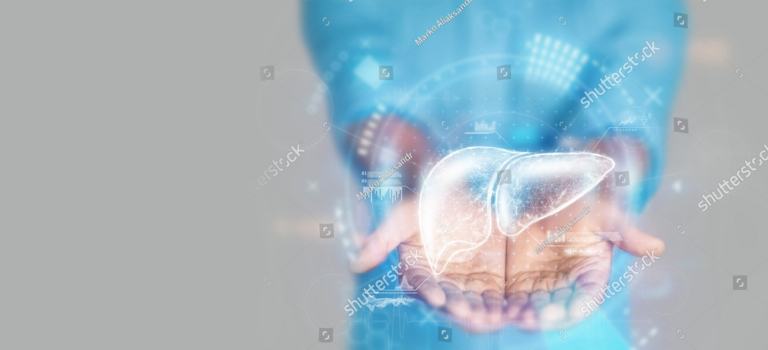Is olive oil healthier than good-ol’ sarson ka tel?
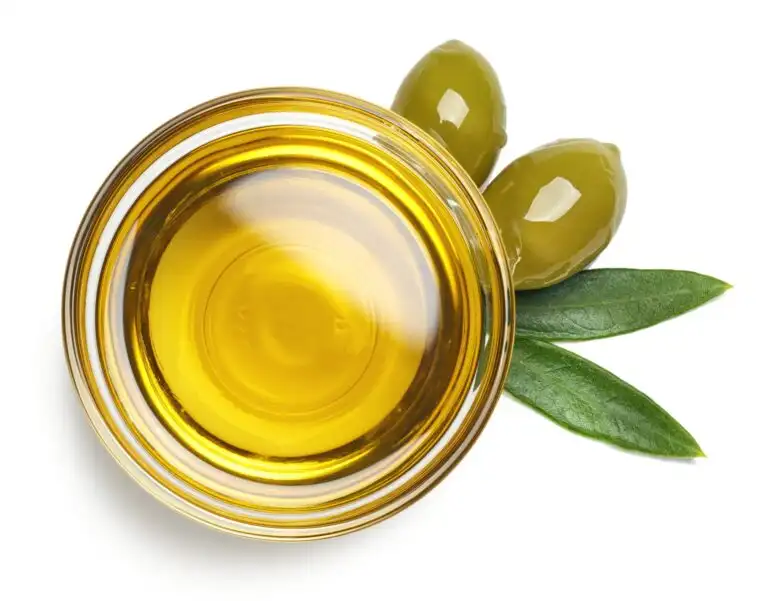
Our dadis, nanis, and mums have been cooking with mustard oil or sarson ka tel since forever. But we millennials have our heart set on olive oil, which is often propositioned as the best when it comes to weight loss. The debate over which oil is better has been going on for quite some time. And it looks like this tug of war between olive and mustard oil will never end. Is olive oil healthier than good-ol’ sarson ka tel? This is what a nutritionist has to say – Winning BrainBUSINESS, Accounting, Affiliate, Auto Insurance, B2B Ecommerce, B2B, Biotechnology, Business, Business Management, Business Travel, Construction, Credit Card, Debt, Entertainment, Finance, Human Resources, Insurance Business, Internet Security, Management, Office Supplies, Online Payment Solutions, Software, Startup, Web Hosting, CONSUMER, Art, Automotive, Casino, Cell Phone, Computer, Dating, Ecommerce, Electronics, Email, Fashion, Golf, Hotel, Internet, Jobs, Law, Mortgage, Music, Online Stores, Pest Control, Photography, Plumbing, Real Estate, Restaurants, Shoes, Travel, Wedding, FINANCE, Financial Services, HEALTH & WELLNESS, Acne, Diet, Energy, Fitness, Gardening, Health Care, Health Fitness, Nutrition, Vacations Travel, Weight Loss, MISCELLANEOUS, Aerospace, Agriculture, Best Travel, Coffee, Dog Training Education Environmental Food & Beverage, Forex, Gifts, Home Based Business, Home Improvements, Internet Games, iPhone, Jewelry, Landscaping, Legal, Luggage, Pharmaceutical, Poker, Retail, School Education, Solar Energy, Transporation, Women Fashion, Work From Home, SALES & MARKETING, Advertising, Marketing, Marketing Email, Media, Online Marketing, Sales, SEO, Shopping Cart Solutions, Social Media, Technology, Twitter, Web Design, Web Development, But today we are here to put an end to this olive oil versus mustard oil battle, so that you can make an informed descision. And to help us out, we’ve got Amreen Shaikh, head dietician and nutritionist at Wockhardt Hospital, Mumbai. So, let’s see what she recommends. How you cook matters a whole lot when it comes to choosing an oil We’re sure when buying cooking oil, you study the content label looking for things like trans fat. But before you get to this stage, you should first be clear on how you are going to cook with this oil. Are you going to fry, saute, or grill with this oil? Explains Ms Shaikh: Is olive oil healthier than good-ol’ sarson ka tel? This is what a nutritionist has to say – Winning BrainBUSINESS, Accounting, Affiliate, Auto Insurance, B2B Ecommerce, B2B, Biotechnology, Business, Business Management, Business Travel, Construction, Credit Card, Debt, Entertainment, Finance, Human Resources, Insurance Business, Internet Security, Management, Office Supplies, Online Payment Solutions, Software, Startup, Web Hosting, CONSUMER, Art, Automotive, Casino, Cell Phone, Computer, Dating, Ecommerce, Electronics, Email, Fashion, Golf, Hotel, Internet, Jobs, Law, Mortgage, Music, Online Stores, Pest Control, Photography, Plumbing, Real Estate, Restaurants, Shoes, Travel, Wedding, FINANCE, Financial Services, HEALTH & WELLNESS, Acne, Diet, Energy, Fitness, Gardening, Health Care, Health Fitness, Nutrition, Vacations Travel, Weight Loss, MISCELLANEOUS, Aerospace, Agriculture, Best Travel, Coffee, Dog Training Education Environmental Food & Beverage, Forex, Gifts, Home Based Business, Home Improvements, Internet Games, iPhone, Jewelry, Landscaping, Legal, Luggage, Pharmaceutical, Poker, Retail, School Education, Solar Energy, Transporation, Women Fashion, Work From Home, SALES & MARKETING, Advertising, Marketing, Marketing Email, Media, Online Marketing, Sales, SEO, Shopping Cart Solutions, Social Media, Technology, Twitter, Web Design, Web Development, Indian cooking requires a lot of sautéing and frying for which olive oil is not the right choice. According to Shaikh, the smoking point of olive oil is very low and it immediately converts into trans fats or unsaturated fats that are very bad for your overall health. Cooking with olive oil in this way can lead to weight gain. In such cases, mustard oil is what you should prefer as it has a higher smoking point than olive oil. “But if you want to use an oil for dressing or for dips, then you can surely go for olive oil. In case you are grilling your food then extra-virgin olive oil can be used as mustard oil is not great for salad dressings as it has a pungent smell,” she suggests. Are there any nutritional differences between olive oil and mustard oil? MUFA, check. PUFA, check. In fact, you’ll be glad to know that both these oils have almost similar nutrient levels which help in keeping your cholesterol in check. “Both oils are rich in antioxidants and anti-inflammatory properties that help in keeping many health issues at bay,” she explains.MUFA and PUFA are needed for better heart health. Image courtesy: Shutterstock That said, mustard oil has an upper hand when it comes to nutrition. This is because it has the ideal ratio of 1:2 of omega-6 and omega-3 fatty acids, as recommended by the WHO. Olive oil on the other has a ratio of 12:1 according to Shaikh, which is not good for your heart health. The verdict? “When it comes to olive oil many people don’t really know how to use it and at times use it as a replacement for regular refined oil which is very, very harmful. So, keeping in mind the Indian scenario i.e. the way we cook and the type of food we eat, mustard oil is the right and a much healthier choice to make. It is inexpensive and is readily available and we all know how to use it,” she concludes. So ladies, the next time you hit the supermarket, you might want to move towards mustard oil leaving that big jar of olive oil behind.
Apart from joint pain, rheumatoid arthritis can have 6 other dreadful effects on the body
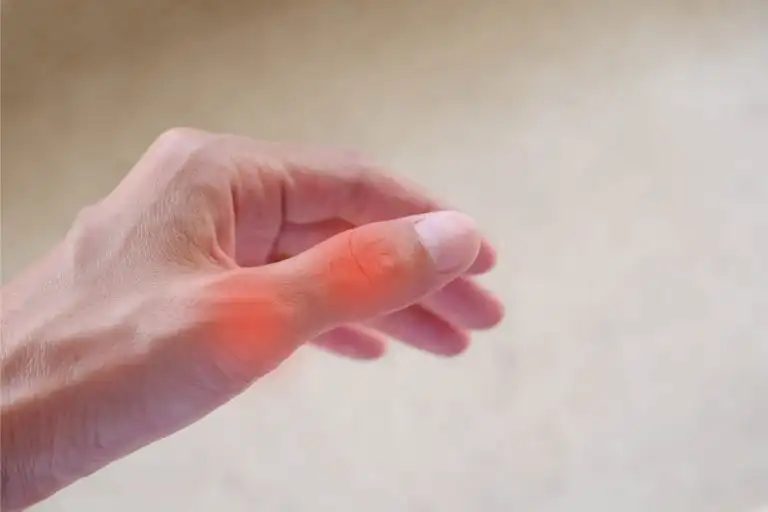
It is a well-known fact that rheumatoid arthritis affects the bones but it actually has other effects on the body, making the situation worse for the patient. If your parents have rheumatoid arthritis (RA), you probably already know how difficult and painful this journey is. Uneven stance and pain in the joints are some of the major concerns that you outrightly notice in RA but apart from that, there are other problems that go unnoticed. That’s why it becomes all the more important for you to understand this problem to know how it is actually affecting your parents’ health. What is rheumatoid arthritis and what are the causes? As defined by The Centers for Disease Control and Prevention (CDC), rheumatoid arthritis is an auto-immune disease that majorly affects the joints and the bones. Auto-immune diseases basically make your immune system attack healthy cells in your body, leading to swelling and inflammation. According to the CDC, RA also affects other body organs like eyes, lungs, and heart due to which patients have to face other challenges as well. Here are the 6 major effects of rheumatoid arthritis apart from joint ache: 1. Chest pain and breathlessness Do you know that rheumatoid arthritis has a major impact on the lungs? That’s because the patients develop interstitial lung disease or ILD where lung inflammation leads to scarring and fibrosis. The majority of people affected by this have severe RA. It only comes to notice when they complain of chest pain and breathlessness. CT scans and X-rays are used to detect it. “Unfortunately, people with rheumatoid arthritis don’t come to know about it as they are more focused on joint aches”, said Dr. Dipti Patel, Rheumatologist consultant, Wockhardt Hospital, Mumbai. 2. Wrist numbness “In RA patients, carpal tunnel syndrome is seen primarily during pregnancy and when one gains weight. Carpal tunnel syndrome is characterised by the veins around the wrist getting compressed and causing numbness in the middle, index, and ring finger”, she explained. 3. Dry eyes and mouth The dry mouth and eyes syndrome is also known as Sicca syndrome. It happens due to the creation of antibodies in the body which causes Sjogren’s syndrome. “In Sjogren’s syndrome, inflammation of the eyes causes the white part to become red. Usually, people go to an eye specialist where they are told to meet an RA specialist”, she says. 4. Bumpy skin “Skin nodules are the direct manifestation of RA. It is primarily seen around the elbow area. This takes place in the case of longstanding or aggressive RA. Actually, fibre and tissue get accumulated at one place, creating a node in the skin which causes it to become bumpy”, she explained. 5. Heart problems It is rare but it can happen. According to a study published in the journal of BMC Rheumatology, people with RA have a higher risk of developing heart problems like high BP, high cholesterol, and diabetes. “In some cases, it can cause arrhythmia which leads to irregular heartbeats. But, it can be controlled by medication”, she says. 6. Raynaud’s phenomenon In RA, some people also develop Raynaud’s phenomenon. In this phenomenon, when an RA patient goes to cold places or sits in an air-conditioned room, s/he tends to get black fingers. This might also lead to ulcers and gangrene. “Sadly, there is no cure for RA. Only treatment for management is available which can control the condition and make sure further joint damage doesn’t take place,” she informs. Why are women more prone to it?According to Dr. Patel, women above the age of 40 are more prone to developing RA. Actually, women go through a lot of hormonal changes in their bodies at various stages of life like menstruation, pregnancy, and menopause. Hormones such as estrogen, progesterone, and androgens influence the development of RA. That’s why women are at a higher risk of developing RA in the first year of their pregnancy as hormones change rapidly during that period. At times, women develop it at a much younger age than men. In fact, suffering from endometriosis might increase the risk of developing RA. If your parents have RA, you must watch out for all these problems to control them before they interfere with their life’s quality. Source: https://www.healthshots.com/preventive-care/family-care/apart-from-joint-pain-rheumatoid-arthritis-can-have-6-other-dreadful-effects-on-the-body/
Neuroendocrine Tumour: Know about its symptoms and treatment
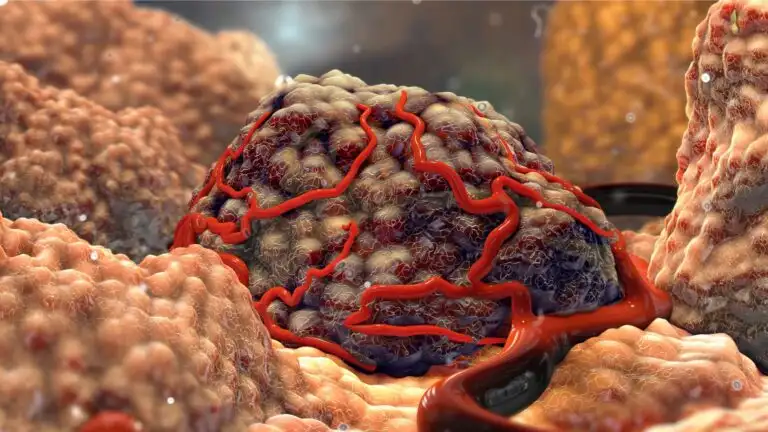
Neuroendocrine Tumour: Know about its symptoms and treatment | PINKVILLA Prof. (Dr.) Mallika Tewari, Senior Consultant & Program Lead Surgical Oncology, Wockhardt Hospital, Mira Road shared in detail about Neuroendocrine Tumour aka NET. Read on to know. Actor Irrfan Khan passed away in Mumbai after battling colon infection. He was diagnosed with a neuroendocrine tumour, 2 years back. Here, we brief you about the neuroendocrine tumour. Read on to know more about this. Neuroendocrine tumours (NETs) are thought to arise from cells throughout the diffuse endocrine system of the human body. They comprise a broad family of tumours that are in the gastrointestinal (GI) tract (i.e. in stomach small intestine, appendix and rectum), lungs and bronchi, thymus, and pancreas. Less common sites include adrenals, thyroid, parathyroid the pitutary gland (latter in the brain).NETs are uncommon and account for about 0.5% of all newly diagnosed malignancies. Some grow slowly while some tend to grow quickly. Did you know? Some NETs may produce excess hormones (functional NETs). While others do not release hormones or may not release enough to cause symptoms (those are nonfunctional NETs). Symptoms of neuroendocrine tumour One may exhibit symptoms of NETs depending on the location of the tumour and whether it produces excess hormones. The common symptoms are feeling fatigued, unintentional weight loss, and pain owing to a growing tumour. Due to excess hormones (functional tumours), one may also notice signs such as intermittent flushing & diarrhoea, hypertension, hypoglycemia, frequent urination, dizziness, and skin rash. Thus, immediately visit the doctor, in case you exhibit these symptoms. Causes Still, the exact cause of NETs is not known. Most NETs are sporadic and few are hereditary and a part of inherited genetic syndromes e.g. MEN-1; MEN-2 etc. Risk factors People of all the age groups may suffer from these tumours. Though, it is rarely seen in children. Are you aware? Gastrointestinal conditions like atrophic gastritis can be the culprits. Treatment The line of treatment will depend on the stage, size and location of the tumour. The treatment may vary from person to person. Your doctor may ask you to go for surgery to get rid of the tumour. Chemotherapy, radiation therapy, hormone therapy, or targeted therapy can also be given.
Balking at Banana flowers: Indians are rediscovering old ways of cooking food during Covid-19 lockdown

bananas: Balking at Banana flowers: Indians are rediscovering old ways of cooking food during Covid-19 lockdown – The Economic Times 100Cleaning banana flowers takes time. You must first oil your hands to prevent staining. Then the dark red outer bracts are peeled off to reveal rows of delicate blooms. These must be individually picked and the inedible parts, a stiff sheath and long stamen, painstakingly picked out from each one. Each flower head has many such blooms and cleaning them is an ideal job for those stuck at home thanks to Covid. Just as people across the world are using this enforced leisure to enjoy the extended process of sourdough bread making, right from fermenting their own starter, many Indians have been using the time to rediscover old ways of cooking and eating that were being pushed aside due to lack of time. bananas: Balking at Banana flowers: Indians are rediscovering old ways of cooking food during Covid-19 lockdown – The Economic Times 114Now there is time to clean and cook banana flower or shevla, vibrantly coloured yam shoots from the Western Ghats that need careful soaking and cooking to prevent it constricting the throat when consumed. Now is the time to dig out old cookbooks, like the Tamil classic Samaithu Paar, with its ingredients given in old measures like ollocks and seers (Wikipedia has conversion formulae) and minutely detailed instructions on how to grind and ferment idli batter. Now is the time to exercise arm muscles by rescuing that grinding stone from being used as a door-stop, and making chutneys with that slightly grainy texture which you never get with the pulverising power of an electric grinder. bananas: Balking at Banana flowers: Indians are rediscovering old ways of cooking food during Covid-19 lockdown – The Economic Times 124Now is the time to unearth those heavy metal cooking utensils we had abandoned in favour of less wrist straining options made of aluminium and other lighter materials. It all makes for satisfying effort and good pictures to post on social media, especially since evoking nostalgia is sure-fire way to get likes. But will it lead to a revival of these recipes post-Covid? Their proponents certainly hope so, talking about the need to educate current generations, and bewailing an obsession with modernity that deems these older traditions uncool. We need to learn from our grandmothers and make masalas from scratch, stop buying only ‘English’ vegetables and using shortcuts like readymade idli batter. bananas: Balking at Banana flowers: Indians are rediscovering old ways of cooking food during Covid-19 lockdown – The Economic Times 133No one should object to being educated about the range of ingredients at our disposal, and the many different cooking techniques used in Indian food. But it is simplistic to assume that the only reason people don’t use them is ignorance, and rather stereotyping to put our grandmothers into a box of pure tradition. Cooking is the most practical of arts and recipes that don’t fit the routines of regular cooks, with all the demands on their time and energy when not confined by Covid, is unlikely to be used often. bananas: Balking at Banana flowers: Indians are rediscovering old ways of cooking food during Covid-19 lockdown – The Economic Times 142What no one points out while extolling banana flowers is that when finally cooked they tend to taste rather like well-cooked red cabbage. Not exactly, of course, and people may well prefer the former – but are they the ones who also have to do the cleaning and cooking? India has a wide variety of unusual tubers, but when well cooked in a spicy dish do they really differ all that much from potatoes? And while hand ground chutneys and pastes do taste different, perhaps even better than machine blended ones, does that really justify the knuckle scraping effort of wielding a stone grinder every time you want to have them. The truth is that what we think of traditional Indian food depends on the generally undervalued labour of wives, daughters-in-law and servants. And when given an option most of them readily picked the less traditional, but less labourious one. bananas: Balking at Banana flowers: Indians are rediscovering old ways of cooking food during Covid-19 lockdown – The Economic Times 151Pressure cookers, for example, cook dals into mush rather than the more textured versions you can taste when slow-cooked, for example in temple kitchens which still simmer dishes in huge vats over wood fires. It is a real and enjoyable difference, but when safe pressure cookers became available, from the 1960s onwards, most cooks happily swapped slow cooking for their speed, which shortened the time they had to spend in hot and steamy kitchens. (It is remarkable how badly ventilated many Indian kitchens still are, often without even a decent electric fan). Old cookbooks also tend to be misunderstood. When you read beyond their yellowing pages and archaic terms, you often find views that were quite modern for their time. S.Meenakshi Ammal, who write Samaithu Paar, has become a paragon of Tamil Brahmin tradition, yet she was a woman who refused to let early widowhood hold her back, and took the unusual step of transforming her skills into a best-selling book. bananas: Balking at Banana flowers: Indians are rediscovering old ways of cooking food during Covid-19 lockdown – The Economic Times 163And after thoroughly documenting the basics in her first book, the next two included more diverse recipes from other communities, including cakes and biscuits. This is not to claim her as a radical, but just to suggest she combined appreciation of tradition with a practical readiness to accept useful innovations – much as most of us are today. Stainless steel, which has been much extolled on social media recently as an example of undervalued ‘real’ Indian style, offers a slight variation on this story. Its use in India is hardly traditional, dating only from the 1960s when the metal became available for kitchen use. And many traditional
World Hepatitis Day: 28 July, 2024
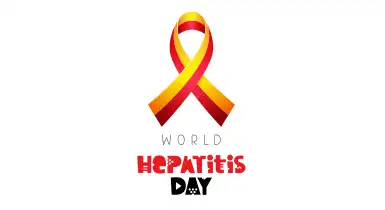
As the world continues to battle with the COVID-19 pandemic, it is easy to overlook the grave realities of various other global epidemics that still plague the society in the background. A staggering 900,000 fatalities are caused by the hepatitis B infection every year, leading the World Health Organization (WHO) to raise awareness about the life-threatening virus that continues to raise havoc. However, despite the campaigns and the conscious effort to bring about a change, the world struggles with the lack of awareness, which is perhaps a bigger problem than the infection. What is Hepatitis? How is it Diagnosed? According to WHO, there are positive main strains of the hepatitis virus – A, B, C, D and E, of which hepatitis B and C are considered to be a common cause of death. The infection contributes to 1.3 million fatalities every year. “Hepatitis is swelling of the liver. It can be caused by varied causes like viral infections, fatty liver, toxin like alcohol, drugs, autoimmune, congenital,” says Dr Keyur Sheth, a gastroenterologist at Apollo Spectra Hospital in Mumbai. “Viral infections like hepatitis A, hepatitis B, hepatitis C, hepatitis E can commonly cause hepatitis. The most common modes of transmission are blood transfusion, needle prick of infected individuals, tattoo piercing, sexual transmission, or mother to child transmission,” he adds. United we stand Keeping in mind this year’s theme, ‘Hepatitis-free future’, the WHO has called upon countries to join hands in defeating the virus by 2030. Urging united effort, the WHO has come up with a positive step agenda to eradicate hepatitis infection: Prevent infection among newborns. Stop transmission from mother to child Leave no one behind Expand access to treatment Maintain essential services during the COVID-19 outbreak Emphasising the importance of early detection of hepatitis in children, Dr Atish Laddad, a leading Pediatrician, Founder & Director at Docterz talks about how the infection can be tackled within six months of contagion. “Mostly in children, these infections tend to get cleared up within a span of 1 to 2 months with no treatment required. But if not detected early (within 6 months) in children, the virus tends to multiply gradually and remains in the body leading to slow yet progressive damage,” he tells Sakal Times . “If not detected on time, it can lead to a state called chronic carrier state. Hence for early detection, it is prudent to get your child tested. Children born to an HBV positive mother must receive an H-B-I-G shot and the hepatitis B vaccine dose within 12 hours of birth,” he adds. Myths & Facts On account of World Hepatitis Day, Sakal Times spoke to Dr. Pratik Tibdewal, a Consultant Gastroenterologist at Wockhardt Hospital, Dr. Roy Patankar, leading Gastroenterologist & Director of Zen Multispecialty Hospital, and Dr. Akash Shukla, Senior Hepatologist, Global Hospital to clear common misconceptions concerning hepatitis. Myth 1: Hepatitis B is Not Treatable Some types of hepatitis tend to go away on its own. Sometimes, it progresses to liver cirrhosis (scarring of the liver). Patients will have to take rest and bid adieu to alcohol while recovering from it. Doctors may prescribe interferon (antiviral agent) to tackle Hepatitis C. Another myth is that hepatitis is a hereditary or genetic disease. The fact is that it is not inherited or genetic disease. hepatitis B is generally contracted from mother to child during birth. Thus, giving immunoglobulin can help prevent it. Myth 2: Herbal or Natural Products Can’t Damage the Liver Many drugs and products are associated with the development of hepatitis. Some drugs used for TB, Epilepsy, rheumatoid arthritis, heart arrhythmias and pain-killers can cause hepatitis. Similarly, many Chinese herbal products, unauthentic, impure or contaminated ayurvedic drugs, local medicines or inappropriate herbal products can cause hepatitis. Myth 3: All Hepatitis Infections Are Life-Threatening Yes, but the fact is that the infection may not kill anyone. Many people are suffering from hepatitis infection and are leading a healthy life. So, do not fret and opt for appropriate treatment. Another myth is that hepatitis B tends to spread by touching, coughing, and sharing utensils. Let me tell you that the fact is that it spreads when body UID from an infected individual enters another through sex, pricking, or even transfusions. Also, some say that hepatitis and jaundice are the same. Not, the fact remains that the jaundice is just the symptom of hepatitis. Myth 4: I Don’t Drink Alcohol and I Only Eat Good Food. So, I Am Not Prone to Hepatitis There are several causes of hepatitis other than alcohol. Hepatitis B, Hepatitis C, non-alcoholic fatty liver disease, auto-immune hepatitis, Wilson’s disease etc. These are some examples of hepatitis which can occur in people who don’t drink or maintain a good diet. Myth 5: Fatty Liver on Ultrasound is Not Important and Can Be Ignored Presence of fatty liver on ultrasound means metabolic imbalance. It should be immediately evaluated by an expert to see if there is damage in the liver and also if there are other associated features like obesity, diabetes, blood pressure, heart disease, lipid problems (cholesterol), snoring etc. It should be promptly treated and change in lifestyle is often warranted. Source: https://www.sakaltimes.com/lifestyle/world-hepatitis-day-2020-building-hepatitis-free-future-53879
Is Apple Cider Vinegar Good for You? Benefits of Apple Cider Vinegar
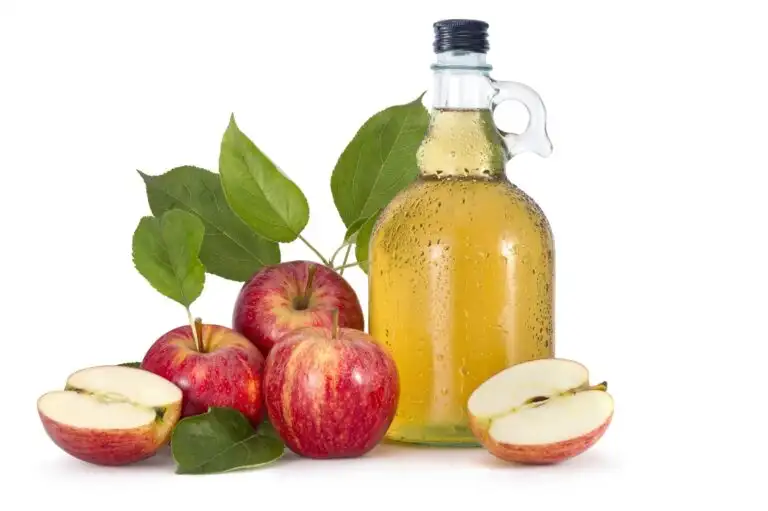
Apple cider vinegar made by fermenting the sugar from apples. This turns them into acetic acid, which is a main active ingredient in vinegar and may be responsible for its health benefits Apple cider vinegar is a popular home remedy. People have used it for centuries in cooking and medicine. Some popular benefits include antimicrobial and antioxidant effects. Other benefits, such as aiding weight loss, reducing cholesterol, lowering blood sugar levels, and improving the symptoms of diabetes. Health benefits of apple cider vinegar like increased weight loss, better blood sugar control and a stronger immune system. Preliminary research that suggests ACV might enhance the work of certain immune-system cells, including bacteria-engulfing cells helping the system fight disease Along with a reduced-calorie diet Apple cider vinegar can lower triglyceride and total cholesterol levels and led to improvements in healthy HDL-cholesterol levels. ACV can prevent blood sugar spikes and improve insulin sensitivity, which means that the body may be more sensitive to the way insulin is transporting glucose from the bloodstream into your cells where it can be used for energy. ACV contains gut-friendly probiotic bacteria which can benefit your stomach and improve digestion. The main substance in vinegar — acetic acid — can kill harmful bacteria or prevent them from multiplying. It has a history of use as a disinfectant and natural preservative. It can help in weight loss by increasing the feelings of fullness and help you eat fewer calories, which may lead to weight loss.
After 12 Surgeries Over 25 Years, 57-Year-Old Woman Walks Freely Again at Wockhardt Hospitals
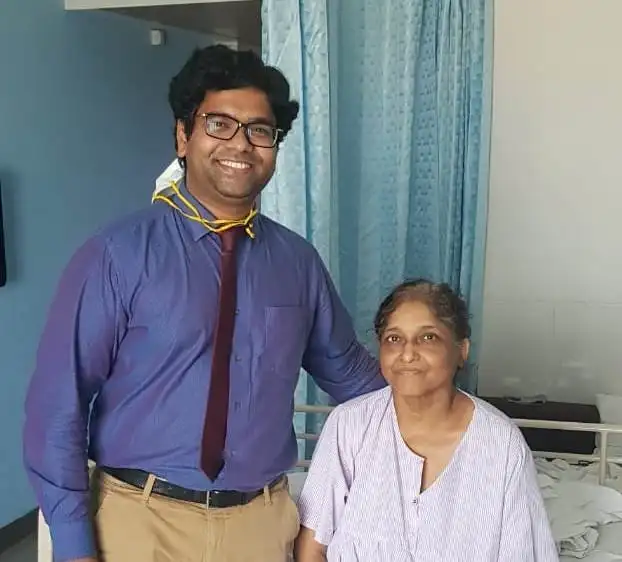
After 12 Surgeries Over 25 Years, 57-Year-Old Woman Walks Freely Again – Apeksha News Mrs. Linda R. Kotak, a 57-year-old lady, came to consult with Dr. Girish L. Bhalerao at Wockhardt Hospitals, Mira Road about one month ago, for Recurrent Dislocation in her Left Hip joint that was operated elsewhere about 25 years ago. The patient is able to move freely after 12 failed surgeries Over 25 years. After thorough history taking it was understood that the patient had symptoms of Avascular Necrosis(AVN) of Left Hip for which she was operated with a surgical procedure called Core Decompression in 1995 at her young age of 30 years. However, it did not succeed in reestablishment of the blood flow to the Femoral Head and had to undergo Left Total Hip Replacement in 1996. The Hip Prosthesis, in accordance to availability to those times, was all-cemented First Generation Charnley’s Implant of Metal on Poly type (metal head with polyethylene cup) – monoblock design. In comparison to today, this was a very initial design without any modularity. However, the same disease pathology of AVN affected in progressive manner to Right Hip as well and patient had to undergo Right Total Hip Replacement, elsewhere with a different doctor – this time with an uncemented method in 2005. However, her gait was not symmetrical and due to inadequate posture training, she occasionally required stick/ walker support to balance her gait using upper limbs. This caused further injuries to her in form of Right ankle fracture (required Surgery – 2017) and Rotator Cuff Injury of Left Shoulder (required Surgery – 2018). Furthermore, this unbalanced gait and abnormal posture put a lot of stress on her spine and her knees. She was operated on Lumbosacral spine in 2018 & Dorso-Lumbar Spine in 2019. She underwent Bilateral Knee Replacement in 2019. After such extensive treatment journey, her troubles did not end and she got recurrent dislocation of her Left Replaced Hip from February, 2020 onwards. After having 5 episodes of such dislocation, which required hospitalization each time, the patient decided to consult with Dr. Girish L. Bhalerao – Super Specialty Consultant Orthopaedic and Spine Surgery at Wockhardt Hospitals in Mumbai. After detailed examination he advised her a Revision/ Redo of the Total Hip Replacement, in July after the lockdown would be lifted due the ongoing Corona Pandemic. However, on !6th June, 2020 she again dislocated her Hip while in bathroom and suffered from unbearable pain. She immediately shifted to Wockhardt Hospitals, Mira Road and her joint was reduced/ relocated in Emergency Department, however with slight movement it again used to dislocate. Due to recurrent dislocations, the adjoining stabilizers (joint capsule, muscle tendons, ligaments) of her Left hip had taken injuries and she got a completely unstable Hip. “Any Joint Replacement procedure revolves around the principle of stability and mobility with perfection in tissue balancing to restore the normal bio-mechanical axis of the joint. A complete unstable Hip, post THR, is a very rare complication which requires a high precision and skill set to operate with appropriate logistic support in terms of high modular dual mobility/ constrained implant availability”, said Dr. Girish Bhalerao. While enquiring about the challenges faced during surgery, Dr. Bhalerao said, “The cementing technique applied by the previous surgeon was impeccable and he did a very nice job, considering the availability of instruments and logistic support at that time. However, this created lot of difficulties for me during implant removal and complete excision of remnant cement with such delicate weak bone tissue of hip joint. With lot of patience, precision techniques like Extended Trochanteric Osteotomy and help of the latest instrumentation the job was completed. Following this, the next challenge was tissue balancing as the trial implants were also unstable owing to complete laxity of tissues. I had to use the latest Design of Constrained Total Hip Replacement respecting the anatomical dimensions to replicate the physiological bio-mechanical axis and decided to perform total cement-less method for better future outcome in terms of acceptability of implants.” The patient was mobilized full weight bearing immediately the next day and was discharged within 5 days. Post-operative physiotherapy and Rehabilitation is tolerated well and is showing steady progress in term of full weight bearing functional gait with minimal support and ability to perform all her activities of daily living independently. Being an avid traveller, soon the patient is willing to plan her favourite tourist destinations. A joyous patient Linda Kotak said, “After 12 failed surgeries, I had lost hope. I never believed that I will be able to stand on my feet. But, Wockhardt Hospitals turned my dream into reality. I can live my life the way I want to without depending on anyone.” Source: https://apekshanews.com/after-12-surgeries-over-25-years-57-year-old-woman-walks-freely-again
Not out at 64: After spending 35 days in ICU at Wockhardt Hospitals, Mumbai Central, A retired cricket scorer recovers from COVID-19
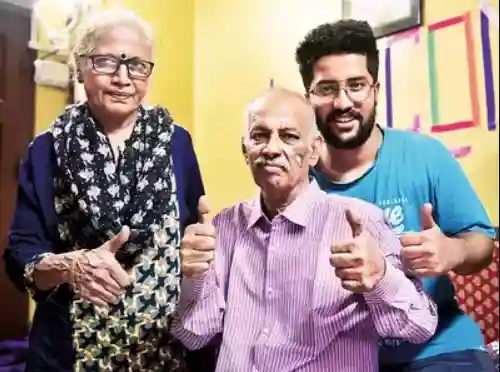
Thirty five days after a COVID positive man was admitted to hospital, the 64-year-old walked out of the hospital a recovered man. On June 12, the family of Parel resident Ramesh Parab, was running from one hospital to the other as he was gasping for breath. His oxygen saturation level had dropped to 50 per cent, where it should be between 94 to 100 per cent. With no ICU beds available in three hospitals, the family finally managed to get a bed in Bombay Central’s Wockhardt hospitals. Parab was straight away taken to the ICU and put on ventilator. The former BCCI match scorer was diagnosed with Covid-19-related pneumonia with Acute Respiratory Distress Syndrome (ARDS) and sepsis with acute kidney injury and multi-organ failure. The treating doctors from Wockhardt Hospitals informed the family that with such severe cases involving multi-organ failure, chances of survival is very low. That’s why when he was discharged from the hospital on July 17 almost after 35 days, even the leading doctor, Dr Kedar Toraskar and other members of the medical team burst into applause. Parab broke down when he saw his wife, son and daughter. “For the first 10 days of his hospitalisation, I used to tell his family members that we are trying our level best, but chances are weak,” said Dr Toraskar, pulmonologist and critical care expert at Wockhardt hospitals, who is also a member of the state task force committee. “Frankly speaking, even I thought at one point that he might not make it, but we never gave up, his creatinine level was high so he was put on dialysis. We also gave him Remdesivir, Tocilizumab, steroids, and antibiotics,” added Dr Toraskar. It was only after 15 days of being put on ventilator support that Parab started showing an improvement. Not many critically ill Covid-19 patients have been as fortunate as Mr Parab. For the first three months of the pandemic, almost 80 to 90 percent patients in such a critical condition had died, according to Dr Toraskar. The worldwide estimated mortality rate is 80% for moderate to severe Covid-19-related ARDS. On July 17, Parab was discharged directly from the ICU, after 35 days. Parab’s 28-year-old daughter Neha who works as a technician in the same hospital said, “I visited him thrice in the ICU, wearing a PPE. It was painful to see his condition. But the staff told me not to lose hope. I am thankful to the entire team of ICU and doctors who saved my Baba’s life,” she said. Even though he has been discharged, it is still a long road ahead to complete recovery. He will soon start physiotherapy.When Parab reached his home in Vishwas Niwas building in Parel on July 17, his neighbours welcomed him back, calling him a fighter. His family cut a cake to celebrate his return. “I survived today thanks to the doctors and all the support staff in the ICU. I got the motivation to survive from them, especially from young nurses working day and night taking such good care of each and every patient,” said a grateful Parab. “My family too never gave up on me. My daughter kept motivating me, saying, ‘Baba, you are a warrior. We’ll go home soon’,” added Parab. Source: https://mumbaimirror.indiatimes.com/coronavirus/news/not-out-at-64/articleshow/77210485.cms
Coping With Diabetes And Hypertension During The Pandemic Era

COVID-19 is a serious public health concern and people with chronic medical issues such as diabetes and hypertension are at a higher risk of getting sick from coronavirus. Here’s how people with diabetes and hypertension should take care of themselves during the pandemic. Follow these guidelines and stay hale and hearty. Coronaviruses (CoV) belong to a large family of viruses that may lead to respiratory illnesses, ranging from the common cold to more severe diseases such as Middle East Respiratory Syndrome (MERS-CoV) and Severe Acute Respiratory Syndrome (SARS-CoV). this year, a new strain of coronavirus was discovered, which has not been previously identified in human beings, also known as a novel coronavirus (nCov). COVID-19 causes respiratory disease and in serious cases, it can lead to pneumonia, hence, the entire country is under lockdown. COVID can affect those with chronic illnesses such as diabetes, high blood pressure, or hypertension as they are in the ‘high-risk’ category. If one gets diabetes, not only does his/her blood sugar level get impacted but the insulin production level also gets compromised. People with high or unmanaged blood sugar levels have less than normal blood flow and their body finds it difficult to harness nutrients and heal. People suffering from diabetes are prone to develop infections and may take a longer time to get fit and fine owing to the weakened immune system. Not only this, but uncontrolled blood sugar levels can also invite diabetes-related complications. Similarly, people with hypertension need to be careful. Hypertension can be described as a condition wherein the long-term force of the blood against one’s artery walls is high enough that it may invite major health problems like heart disease and stroke. The risk factors can be attributed to obesity, family history, too much alcohol intake, and smoking. Since people have been advised to stay at home their blood sugar levels and hypertension may go out of control. Hence, they should take charge of their health and stay healthy. Tips for people with diabetes and high blood pressure
THERE WILL BE AN ANSWER, LET IT BE

Sometimes, the hardest thing to do is to do nothing. This is true for the Queen of England, and neurosurgeons with the latest technology and research at their fingertips. If this was your father, what would you do?” I asked a few members of my team in an exercise I regularly indulge in to evaluate decision-making. A 78-year-old previously healthy man had come in with a large hypertensive haemorrhage in his brain that had left him mute and paralysed on his right side. He was in a coma partly because of the location of the bleed, but also because of the pressure it was creating. We could remove the clot and that would probably save his life, but it was unlikely to alter his overall condition. He could be on a ventilator for weeks and discharged home on a tracheostomy, but would still need months, if not years, of 24/7 nursing, continuous physiotherapy, being fed from tubes, and made to pass urine via a catheter – condemned to an existence of meaningless metabolism he would probably never have wanted. If he made a meaningful recovery after all, he would probably still be dependent on others for his daily needs, doomed either way. “I would do whatever it takes to save him. I can’t live with the guilt of doing nothing, especially if there is a small chance of him making recovery,” appealed the senior resident unequivocally. I turned my eyes to the next person, someone who loves to rattle off numbers, who substantiated, “Literature suggests that in such cases, long-term functional independence is achieved in about 10–30 per cent cases, with mortality rates of 60 per cent at one year. Unfortunately, these numbers do not help me decide.” “It’s easy to make a perfect decision with perfect information. Medicine asks you to make perfect decisions with imperfect information,” I recalled having read an essay by Siddhartha Mukherjee. I stared into the eyes of the junior-most member of the team. “If this was my father, I would not do anything, just keep him comfortable,” he adjudicated matter-of-factly. “Why?” I queried, ragging him with “is it because you don’t know what to do?” Years of training in medicine makes you tough. And when you’re on the other side and in charge, you need to ask tough questions even when you’re all sailing in the same boat of uncertainty. “If he passes away, he passes away. If he survives, my family does not have the means to support full-time nursing over a long period. And I’m pretty sure that seeing him like this for months is going to be demoralising for everyone at home, leading to fights, discord, and a perpetual state of unpleasantness. He’s led a full life. I don’t think we should mess with nature.” Sometimes the most unassuming people take the most practical decisions, I thought to myself. “Who are we to decide? Place the data on the table in front of the family, with the pros and cons of each approach, and let them take a call,” proposed another, concluding the discussion. It is easy for a surgeon to present published data in a manner that goads a patient and their family to make the decision that the surgeon wants them to. You can either speak with compassion or incite fear, especially if it’s a question of surgery at a time of emergency, when relatives are emotional and unable to think rationally. But it is the surgeon’s responsibility to help them make the decision that’s right for them. In such situations, after I explain things to the patient’s family, I always end the discussion with the golden, reassuring words my mentor used to say: “Whatever decision you take will be the right decision for you and your loved ones.” Who are doctors to decide who will survive and who won’t… but subconsciously, we make these decisions all the time for patients and their families. What is important when doing so is to keep one’s own biases and opinions aside, and present things in a rational and unemotional way to relatives. “When there’s no place for a scalpel, words are the surgeon’s only tool.” Paul Kalanithi sighed in his heart-wrenching memoir –When breath becomes air. It’s the same thing with grade 4 brain cancer. If you don’t carry out any surgical intervention, survival is three to six months. If you operate and offer radiation and chemotherapy, survival can be one to two years. Of course, there are outliers who will survive a little longer, but would you offer the option of surgery to someone who has to sell his land or only cow, and have him exhaust all savings just to have them spend the rest of their lives between home and hospital? Even affluent people who can easily afford the whole works would think twice before opting for expensive and emotionally depleting treatment options that may or may not yield results. It is not our circumstances that make us or decide our fate, but the way we respond to them.“There is nothing good or bad,” as Shakespeare wrote in Hamlet, “but thinking makes it so.” The relatives of the gentleman with the hemorrhage didn’t opt for any aggressive treatment. He passed away three days later. While that week must have been full of turmoil for them, the son came back a month later to simply say, thank you. Source: http://www.mazdaturel.com/there-will-be-an-answer-let-it-be






